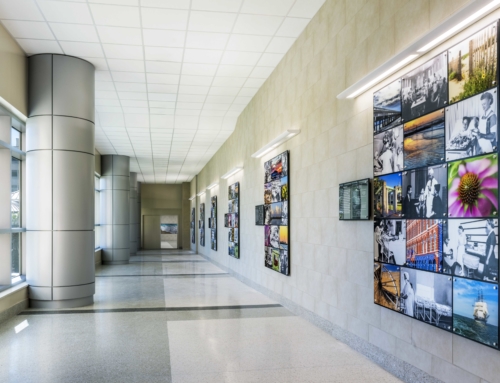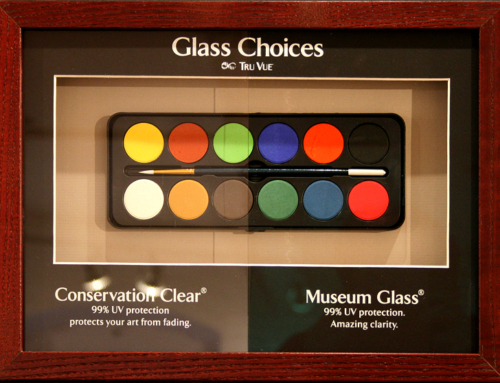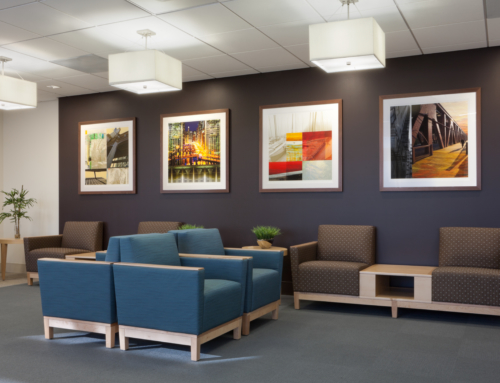By Peter Gianopulos
Sometimes the difference between a stressful and acceptable hospital stay is the simple matter of the right art being on the walls.
There was a time, not too long ago in fact, when every hospital waiting room in the land seemed to be painted in mint-green hues. Pistachio and lime as far as the eye could see.
The prevailing wisdom said that cool greens had a soothing effect on patients, but Jan Marion, the current owner of H. Marion Framing stores in Glenview and Wilmette, knew better. He spent many years visiting hospitals with his ailing father, Harold, and saw the spaces for what they were: “scary,” “cold” and “institutional-looking.”
It’s one of the reasons Marion has devoted so much of his time and resources to the “healing art” movement, which seeks to comfort health-care patients (and their families) via soothing design schemes and inspirational art.
In some cases, Jan’s job is as simple as lowering artwork so that people in wheelchairs can easily view it, but sometimes it involves the total overhaul of a décor scheme or the inclusion of new art pieces to distract patients from the stress of tests and scans. Although he’s worked in some 50 medical environments, here are four of the most striking examples of his work and the motivations that led to each:
1. Although the project is not yet completed, Marion has been working with Condell Medical Center in Libertyville to create a whimsical design scheme for the hospital’s pediatric emergency department, painting or printing giant images of dolphins, crabs and seagulls onto environmentally friendly fiberboard. Adults tend to prefer static images, but children like movement, which is why the giant cutouts (each 20 inches square) seem to be diving, dancing and twisting around beds and chair rails.
2. A series of dazzling images of flowers and plants lines the walls of the Hyperbaric Oxygen (HBO) Therapy rooms at St. Francis Hospital in Evanston – the prints are designed to bring the hospital’s famous garden inside – and hand-cut silk mobiles dangle from the ceilings. Since HBO patients must lie in enclosed chambers and inhale oxygen at elevated pressures for hours on end, Marion suspended his mobiles overhead so that patients could stare at the leafy shapes and imagine them floating down all over the room as though shed by Elm trees.
3. When designing a room for an older population, Marion starts by selecting images with more contrast, to offset eye disease, and often uses non-glare glass in his frames. But at Maryhaven Nursing and Rehabilitation Center in Glenview, he also created a “way-finding” room, hanging a series of Norman Rockwell prints in a central room not only to buoy the spirits but to create a landmark for navigation.
4. Northwestern’s Executive Wellness Suites were created for a very specific niche of the health-care population: successful, on-the-go executives who are accustomed to the very best that life has to offer. So Marion designed each suite as if it were a North Shore day spa, outfitting the rooms with solid-walnut corner mirrors, real pebble flooring and granite surfaces – “the same things,” Marion says, “that they would expect in their own homes and offices.”







